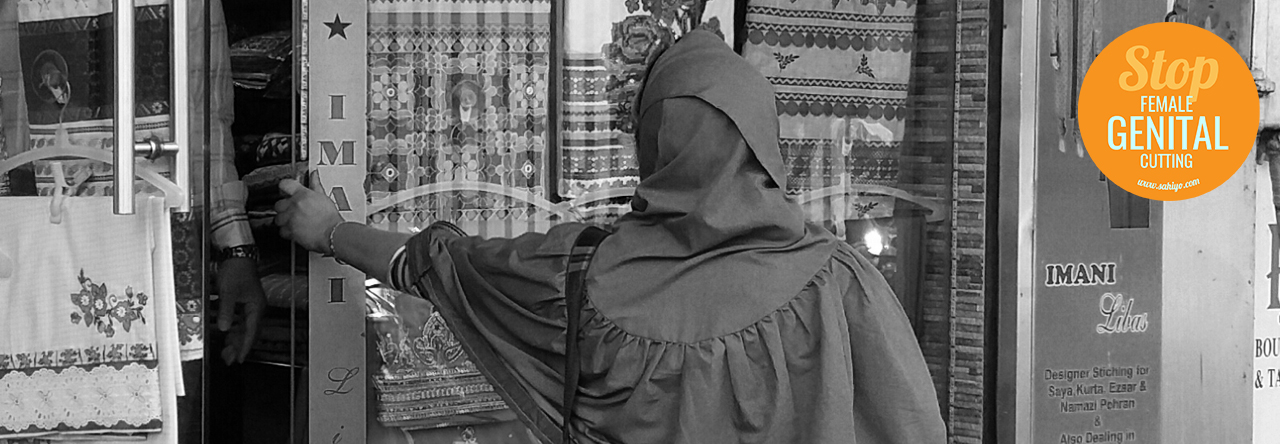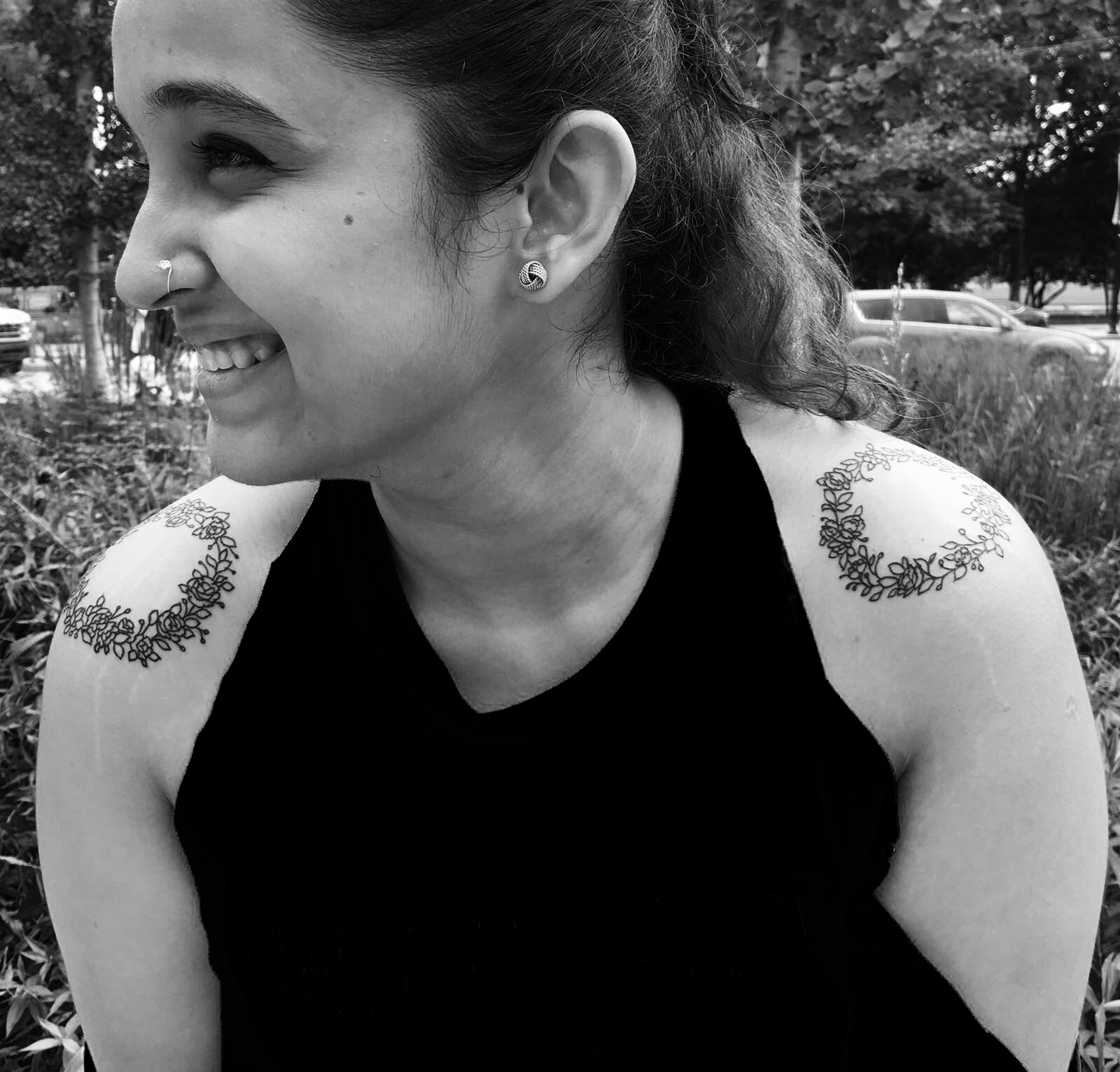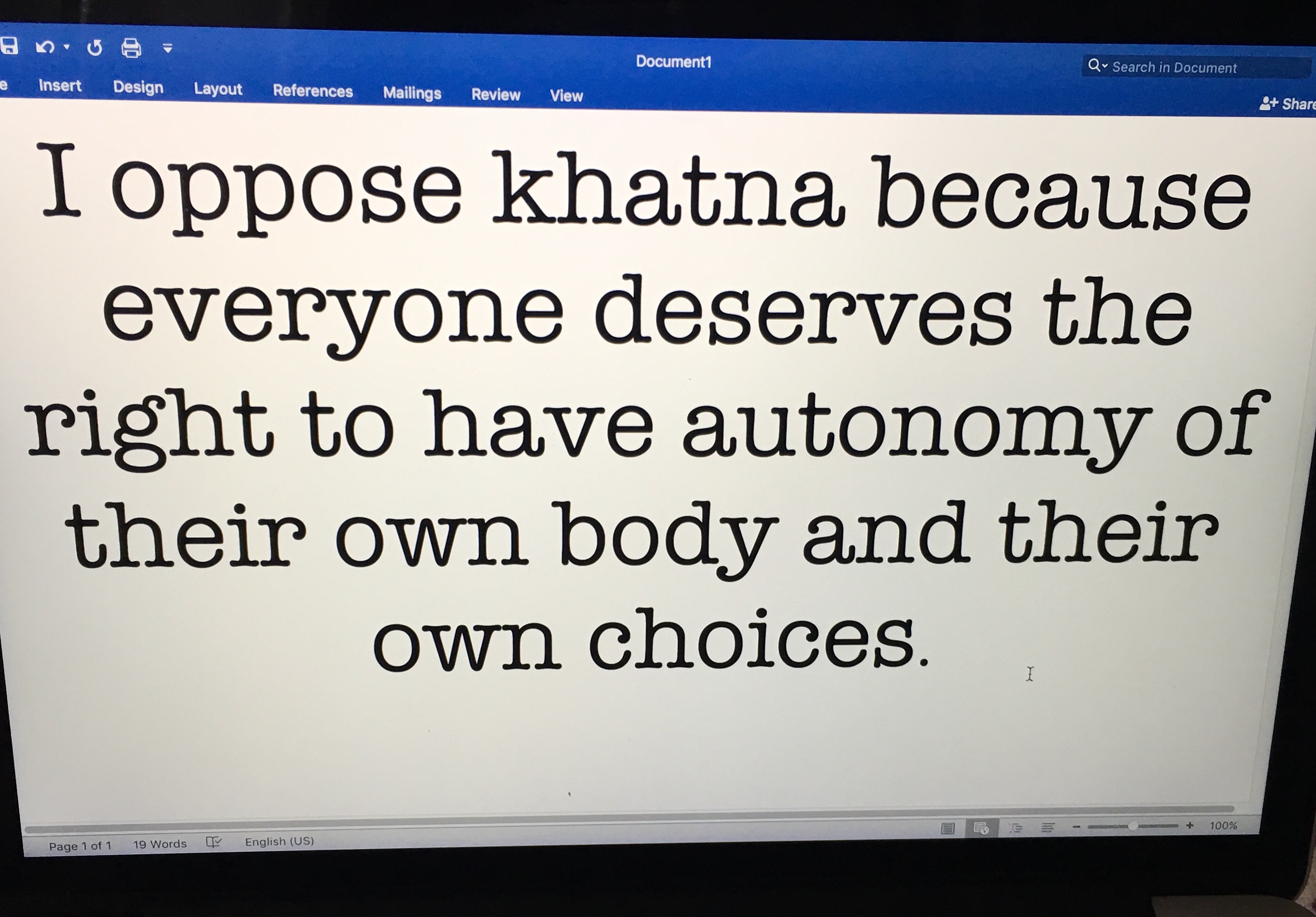(This article was originally published in English on November 8, 2016. Read the English version here.)
नाम: अज्ञात
उम्र: 26
देश: संयुक्त
राज्य अमेरिका
शनिवार की स्कूल की क्लास में मैंने पहली बार इसके बारे में सुना। एक पुरुष शिक्षक उस शनिवार की सुबह हमारी क्लास में पढ़ा रहे ते, और विषय था खतना। उस 14 वर्ष की उम्र में, मुझे वास्तव में पता नहीं था कि इसका मतलब क्या है, लेकिन मुझे पता था कि इसमें कुछ ऐसा शामिल था जो यौन-शिक्षा से संबंधित था। मैं शर्मिंदगी भरी स्थिति में कमरे के दाईं ओर लड़कियों के साथ बैठी थी, और लड़के कमरे के बाईं ओर बैठे थे। शिक्षक ने पुरूष खतना के बारे में बोलना शुरू किया; कहा कि उसमें त्वचा को सर्जरी के द्वारा हटा दिया जाता है, स्वच्छता के लिए। उसके बाद उन्होंने महिला खतना के बारे में बताया; कि यह एक लड़की की यौन इच्छा पर अंकुश लगाने के लिए किया जाता था। लड़कियों को पवित्र, शांत और आज्ञाकारी बनाना था। छोटी लड़कियों का खतना करना उन्हें असंयमित होने से बचाने का एकमात्र तरीका था। यह उनके परिवारों को शर्मिंदा होने से रोकने का एकमात्र तरीका था।
मुझे याद है कि वहां बैठकर मुझे पता नहीं था कि मेरे शिक्षक किस बारे में बात कर रहे हैं। मुझे यकीन था कि मैं कभी भी इस प्रक्रिया से नहीं गुज़री थी। मैं उस दिन उस कमरे में बैठी हुई बहुत असहज और अशांत महसूस कर रही थी।
मुझे याद है कि उसी शनिवार को हम सहेलियां क्लास की एक बड़ी लड़की के घर रहने गए थे, जहाँ पर उस दिन क्लास में जो सुना था उस विषय पर बात होने लगी। मैं चुपचाप बैठी रही जब एक दूसरी लड़की ने समझाया कि यह प्रक्रिया लड़कियों पर क्यों की जाती है, कैसे यह हमें बेहतर मुसलमान और बेहतर बोहरा बनती है, क्योंकि खतना यह सुनिश्चित करता है कि हम में यौन इच्छाओं और विवाह पूर्व संभोग की चाह नहीं जगेगी। खतना ने हमें पवित्र किया था, हमें शुद्ध किया था। मैंने गौर से सुना जब अन्य लड़कियों ने अपनी खतना की कहानियों बताई। मुझे धोखा महसूस हो रहा था क्योंकि मुझे पता था कि मैं कभी भी इस “ज़रूरी प्रथा” से नहीं गुजरी थी। उस वक़्त मुझे इस ‘ज़रूरी प्रथा’ का सही मतलब नहीं पता था। मेरी समझ में सिर्फ यह आ रहा था कि मै उन लड़कियों के जैसी नहीं थी, कि मैं एक “बुरी लड़की” थी, कि मैं गंदी थी, और मैं सिर्फ एक अच्छी मुस्लिम होने का नाटक कर रही थी।
मुझे याद है कि आखिरकार कुछ हफ्तों बाद मैंने अपनी माँ से इसके बारे में पूछने की हिम्मत जुटाई। उम्मीद भरी आवाज़ से मैंने उनको पूछा कि क्या मेरे साथ यह हुआ था, और बस मुझे याद नहीं था? उनका चेहरा बदल गया । उन्होंने अपना सिर हिलाया। जब हम भारत में थे तब उनको हमेशा मेरे मेरा खतना करवाना था, लेकिन कभी मौका नहीं मिला। मैंने उनको अपने दोस्तों से सुनी हुई कहानियाँ सुनाईं और उनसे पूछा, क्या वह मुझे इस प्रक्रिया को समझा सकती हैं, क्योंकि मुझे अपनी क्लास में इसे समझने में परेशानी हुई थी। उन्होंने मुझे खतना की प्रक्रिया समझाना शुरू किया; कैसे एक लड़की के भगशेफ या क्लाइटोरिस से त्वचा को हटाया जाता है, उसे पवित्र और शुद्ध बनाने के लिए। जैसे ही मैंने पूरी बात सुनी, मैं डरकर पीछे हट गई। उन्होंने मुझे कुछ मिनटों तक देखा, और फिर अधिकार के साथ कहा कि अगली बार जब हम भारत जाएंगे, तो वह मुझे मेरी चाची, जो एक डॉक्टर हैं, उनके पास ले जाएँगी जो मुझ पर खतना करवाएंगी। मैं उनके सामने अपने घुटनों के बल बैठ गई, उनसे भीख माँगते हुए कि मेरे साथ यह न करें, भीख माँगते हुए कि इस अकल्पनीय दर्दनाक प्रक्रिया से ना गुजरने दें। मैंने उनसे वादा किया कि मैं अच्छी रहूँगी, मैं स्वच्छ रहूँगी, मैं वह कुछ भी करूँगी जो वह चाहती थी अगर वह इस पूरी बात को भूल जाएँगी। उनहोंने सिर्फ इतना कहा कि “हम देखेंगे।”
मुझे याद है बड़े होते हुए, मैं खतना के बारे में और अधिक शोध करती रही यह जानने के लिए कि आख़िर यह होता क्या है। एक बार मेरे चचेरे भाई ने बड़े जोश से बताया कि यह कितना गलत है। तब मुझे एहसास हुआ कि मेरी माँ ने मुझे कितने बड़े नुकसान से बचाया है। आज मैं खतना को बहुत अलग नज़र से देखती हूँ।
कई युवा लड़कियों से उनका चुनने का अधिकार छीन लिया गया है। किसी ने उनसे नहीं पूछा कि क्या वे खतना कराना चाहते हैं। उनके परिवारों ने उनके अस्तित्व के एक हिस्से को चुराने का फ़ैसला कर लिया, इस बारे में कोई परवाह किए बिना कि इसका उन पर क्या असर होगा, और अक्सर अपनी अनमोल छोटी बच्चियों को अस्वच्छ और अनुभवहीन हाथों में देने का निर्णय लिया।
मुझे याद है कि महीनों पहले एक बड़ी फेसबुक चर्चा खुलकर बाहर आई, जिसमें मेरे पहचान की एक बहुत ही मुखर लड़की ने खतना के खिलाफ आंदोलन करने वालों पर पर आरोप लगाया कि वे बोहरा समुदाय की “गंदगी” को पब्लिक में बाहर ला रहे थे। उस पल के पहले मैंने अपने समुदाय के किसी व्यक्ति पर इतनी शर्म महसूस नहीं की थी। यह प्रथा गलत है, और इसका गैर-रजामंदी वाला स्वरूप मेरे लिए इसे और भी दिल दहलाने वाला और निंदनीय बनाता है। जब आपका समुदाय कुछ ग़लत कर रहा है, और इसे पैगंबर (अल्लाह उनको शांति दे) द्वारा सिखाई गई एक धार्मिक प्रथा के रूप में बता रहा है, तब आप इससे छिपकर भाग नहीं सकते हैं। आपको बहस करने के लिए मुँह खोलना पड़ेगा और चर्चा करना होगा कि हम एक समुदाय के रूप में बेहतर कैसे बन सकते हैं। आपको चर्चा करना होगा कि हम अपने समुदाय की युवा लड़कियों और युवा महिलाओं की सुरक्षा कैसे कर सकते हैं।
एक वैश्विक समुदाय होने के नाते हम इसे रोकने के लिए बहुत कुछ कर सकते हैं। मेरी मां ने मुझे बचाया था। उन्होंने मेरे लिए अपने प्यार को सबसे पहले रखा, और
आज उनकी वजह से मैं एक पूर्ण महिला हूँ। मैं उनकी सुरक्षा और मार्गदर्शन के लिए हमेशा आभारी हूं। सभी युवा महिलाएँ अपने शरीर पर समान सुरक्षा, समान प्रेम, समान सम्मान और समान अधिकार की हक़दार हैं। इतना तो कम से कम हम कर सकते हैं।







